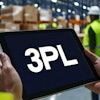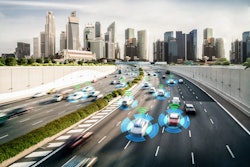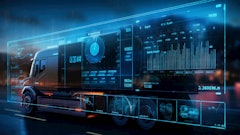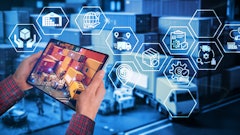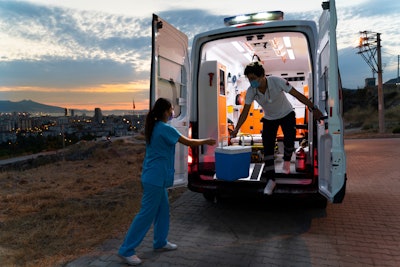
Every day, medical staff responsible for transporting lifesaving donor organs are faced with decisions that could mean the difference between life or death for a transplant candidate. With the rise of autonomous modes of transportation, these same teams will be presented with completely new decisions, challenges and opportunities that will transform the organ transplant supply chain as we know it.
For example, transplant teams will need to answer questions such as, should this donor organ be transported to the hospital where the transplant surgery will be performed by a traditional car with a driver, or an autonomous car or helicopter or a mix of both?
With more than 100,000 people on the national organ transplant waiting list, autonomous transportation could have a profound impact on the organ transplantation journey. By providing an agile, easy-to-deploy transportation alternative, autonomous transportation can be the difference in cases where transportation challenges like canceled flights create barriers to organs being delivered on time for lifesaving transplant surgeries.
According to an analysis by Deloitte, more than 10% of miles traveled in the United States could be in autonomous vehicles by 2030. So, how will transplant teams answer questions like those posed above? I believe the answer is a centralized technology platform that integrates all parts of the donation and transplant supply chain which includes organ delivery and transportation.
To make the most of next-generation modes of transportation, like autonomous vehicles and drones, we must take steps to innovate our organ transportation supply chain today. If customers of Amazon can effectively track their packages down to the moment they are delivered, including those products delivered by drone, why can’t we offer the same peace of mind for organ recipients?
Room for innovation in today’s organ transplant supply chain
Since the first successful kidney transplant in 1954, the organ donation and transplant supply chain has evolved into the complex system we have today. This multifaceted ecosystem combines the efforts of medical teams, support staff, pilots, couriers and families, all working together to save a life. But historically, as health care has evolved, the transplant supply chain itself currently lacks end-to-end visibility and agility.
For decades, the transport of lifesaving organs has been tracked with countless hardworking, mission-driven people, texts, calls and paper trails. Patients and their family members awaiting organs are often put through stressful scenarios if an organ does get delayed. When every second counts, real-time coordination across all stakeholders of the transplant supply chain is critical. I believe that full supply chain transparency requires the ability to achieve each of the following capabilities:
- Distributed teams can be unified to provide life-changing care and make vital decisions from anywhere.
- Logistics can be proactively managed for all time-sensitive resources, providing confidence in the management of medical shipments at each moment.
- Transportation delays can be reduced or avoided to ensure higher donor organ quality and viability.
- Transplant teams can know exactly when an organ will arrive at their location for surgery (real-time ETAs, down to the minute), and exactly what conditions the organ was exposed to on its trip.
- Organ Procurement Organizations (OPOs) and hospitals can manage their time more efficiently.
- Patients can be offered realistic and less stressful updates about the status of their donor organ.
- Bonus round… Integrations with the use of electric vehicles in a multimodal transportation chain can reduce overall carbon footprint.
Lifesaving surgeries happen everyday thanks to the generosity of organ donors. As the medical technology around these operations and procedures advance, I propose that the supply chain that supports them should advance as well. My recommendation is for transplant supply chain stakeholders - including everyone from hospital leadership, transplant teams, OPOs and more to collaborate, research and prioritize technology solutions that centralize communication and management of resources.
Autonomous transportation as a driver of change
Autonomous vehicles represent a fast-paced field of modern technology, as companies compete for dominance in this field of emerging transportation capacity. For instance, Cadillac’s Super Cruise and Ford’s BlueCruise offer hands-free driving on pre-mapped highways. Perhaps the most well-known vehicle on the market today, the 2022 Tesla Model S, was one of the first vehicles available with semi-autonomous driving features. LIFT Aircraft is breaking down barriers to flight with access to personal flying taxis that don’t require a pilot's license to operate. Other UAS organizations are improving cargo deliveries and the safety of utility and infrastructure inspections. A growing movement to introduce more electric modes of transportation will also play a role in public health, which aligns with recent net zero emissions goals set by the Biden-Harris Administration.
As this technology advances, autonomous vehicles could, quite literally, drive change for medical advances. When integrated with an increasingly innovative organ transplant supply chain, the rise of autonomous modes of transportation will enable increased control over transportation delays; support the implementation of lifesaving strategies between all involved parties for maximum efficiency and lead to establishing operational protocol at hospitals and transplant centers for integrating UAS technology and help overcome geographical and airspace challenges to provide organs to far-reaching locations.
If we all woke up tomorrow and autonomous modes of transportation were suddenly the norm and integrated into daily life, our current transplant supply chain would simply not be able to handle integrating with this transportation option. Since we know this technology is coming, fast, there is an urgent need to prepare our healthcare and organ transplant supply chains now. The future of organ transplantation depends on it.

